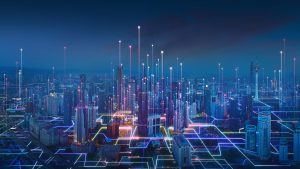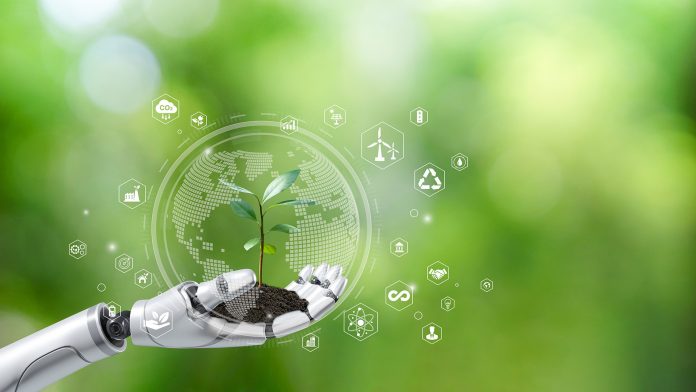The burgeoning development of the Internet of Things (IoT) has precipitated transformative changes in various sectors, most notably in urban planning and city design.
Integrating IoT devices and platforms into everyday life promises to provide real-time monitoring capabilities and intelligent decision-making systems, enhancing overall quality of life.
However, with this technological evolution comes significant challenges, particularly concerning energy consumption and environmental sustainability.
As the world grapples with climate change and environmental degradation, there is an imperative need to transition towards more sustainable practices.
One such approach involves leveraging green IoT technologies to create eco-friendly smart cities. These innovative solutions offer considerable potential for reducing pollution levels, managing resources more efficiently, improving public safety measures, and ultimately enhancing the quality of life for urban dwellers.
Innovation News Network discusses various techniques and strategies associated with green IoT technology while examining its intersection with advanced technologies like Artificial Intelligence in promoting sustainable city development.
Understanding the IoT
The Internet of Things (IoT), a technology that enables connectivity between devices in smart cities, has demonstrated tremendous potential not only in enhancing the quality of life through applications such as real-time monitoring and home automation but also in advancing eco-friendly practices by reducing energy consumption and promoting sustainable resource utilisation.
It encompasses everything within smart cities – from cameras, sensors, and RFID readers to drones and mobile phones – allowing for constant connection anywhere, anytime, using any medium. Furthermore, the adaptive nature of communication networks facilitated by IoT makes these components smarter.
Therefore, they can work together towards common objectives such as public safety or traffic management.
The vast amounts of data generated by IoT require considerable storage capacity, cloud computing resources, and wide bandwidth for transmission to make this technology ubiquitous. This process often involves extensive processing power, leading to high energy consumption levels at the device end.
However, implementing efficient techniques could considerably reduce power usage during big data processing and transmission.
These innovative techniques are essential in green IoT initiatives to create more sustainable smart cities while reducing environmental impact. When applied effectively, they could decrease pollution hazards linked with increased energy demand alongside improving resource utilisation efficiency. Therefore, it is safe to infer that harnessing the full potential of green IoT technologies can lead to more eco-friendly smart cities – reducing our carbon footprint while still enjoying the benefits of technological advancements.
Challenges of IoT integration
Despite its transformative potential in urban environments, integrating Internet of Things technologies into smart cities presents several significant challenges.
One of the primary concerns is energy consumption. While IoT devices are designed to optimise operations and reduce overall energy use, they require substantial power to collect, process, and transmit vast amounts of data. This high energy demand can contribute significantly to a city’s carbon footprint if not appropriately managed.

Furthermore, as these devices become ubiquitous in our cities, their energy needs could strain existing electrical grids, causing frequent outages or necessitating costly infrastructure upgrades.
Another challenge lies in managing the massive amounts of electronic waste (e-waste) generated by IoT devices. As technology evolves rapidly, many IoT devices have short lifespans before they become obsolete or need replacement due to wear and tear.
The disposal of this e-waste poses a significant environmental hazard due to the toxic materials found in many electronics, such as lead, mercury, and cadmium. Without proper e-waste management strategies, integrating IoT into smart cities may inadvertently contribute more harm than benefit to the environment.
Moreover, there is an increasing concern about data privacy and security risks associated with IoT integration in smart cities. With billions of interconnected devices constantly collecting sensitive information about individuals’ behaviours and preferences, it poses a severe risk if it falls into the wrong hands or is used unethically.
Additionally, cyber threats become more imminent when dealing with sophisticated systems like Smart City Networks, where even a minor breach can disrupt critical services, affecting millions of residents simultaneously, thereby questioning the reliability of such technologies for our future urban societies.
The need for sustainability
Ironically, while we push for advancements in urban development, it is imperative to remember that sustainability should be at the core of these progressions. The rapid expansion and evolution of IoT technology pose a significant challenge to the environment through increased energy consumption and production of electronic waste.
Despite its many benefits, such as improved connectivity and data-sharing capabilities, the environmental footprint of IoT cannot be neglected. Hence, striking a balance between technological advancement and environmental conservation has become a necessity rather than an option.
The concept of green IoT offers a path towards this sustainable future by reducing energy consumption and minimising e-waste generation. By leveraging efficient algorithms and data processing and transmission techniques, green IoT seeks to make smart cities more eco-friendly without compromising their smartness or functionality.
For instance, with cloud computing’s help, large volumes of data can be processed using less energy-intensive methods than traditional computing models. Similarly, advancements in device design can lead to low-power devices that do not compromise performance or utility.
Therefore, we urgently need to embrace green IoT practices to pursue smarter cities. Incorporating principles such as energy efficiency into the very fabric of our connected world will ensure that our strides towards urban development do not come at nature’s expense.
This approach calls for concerted efforts from policymakers, technology developers, city planners, and ordinary citizens– all working together towards a common goal: creating sustainable smart cities powered by green IoT technologies.
Transitioning to green IoT
Transitioning towards sustainable practices in digital innovation is a critical step in mitigating the environmental challenges posed by conventional IoT usage.
Many cities are already adopting green IoT technologies, which offer environmentally friendly solutions that aim to reduce energy consumption and emission of harmful substances. As a subset of the broader IoT concept, Green IoT incorporates energy-efficient devices and applications, renewable energy sources, and low-power protocols into existing systems. This transition aims to decrease the carbon footprint and improve operational efficiency, thereby resulting in cost savings for smart city administrations.
Implementing Green IoT involves developing strategies to optimise resource utilisation through effective data management and transmission techniques. Central to this approach is the efficient processing of Big Data generated from numerous interconnected devices within a smart city environment.
Computational models such as cloud or edge computing can help manage these extensive datasets while minimising power consumption. Additionally, incorporating advanced communication modes like Low Power Wide Area Networks (LPWAN) can facilitate long-range connectivity among devices requiring less power.
Adopting and integrating AI technologies also play an integral part in realising green IoT environments within smart cities. AI-driven algorithms can provide predictive analysis of energy consumption patterns, leading to more effective planning and resource allocation.
Moreover, Machine Learning techniques can optimise system performance by identifying inefficiencies in real-time and enabling proactive maintenance measures, thus reducing waste generation. Therefore, combining green IoT with AI capabilities presents significant potential for creating smarter, eco-friendly urban spaces that align with global sustainability goals.
The role of Big Data
The pivotal role of Big Data in advancing sustainable practices within smart cities cannot be underestimated, particularly in its ability to process vast amounts of information from countless interconnected devices.
The essence of IoT is the collection and delivery of a plethora of data through avant-garde communication technologies, which can subsequently be analysed for intelligent decision-making. This massive processing and transmission of data inherently consumes high volumes of energy, leading to environmental degradation. However, deploying efficient techniques could potentially lead to reductions in power consumption.
Moreover, we must acknowledge the promising relationship between Green IoT and Big Data, as this combination has demonstrated the potential to create more sustainable, green, and smarter cities. This relationship revolves around decreasing pollution hazards while reducing energy demands, thus leading to efficient resource utilisation.
Therefore, it is evident that Big Data holds immense potential in aiding our transition towards greener practices and enhancing the overall quality of life within smart cities by promoting sustainability at its core.
Energy efficiency techniques
As we navigate the complexities of big data and its significant role in the era of smart cities and green IoT, it becomes crucial to delve into techniques that enhance energy efficiency.
This critical aspect forms an intersection between environmental sustainability and the application of innovative technologies. The pressing need for energy-efficient methods in managing vast amounts of data processed by IoT devices stems from the goal of reducing power consumption, thereby contributing to greener cities.
Various techniques have been developed and implemented to boost energy efficiency in IoT systems. These can broadly be classified as hardware-based or software-based approaches, each with unique pros and cons.
While discussing these techniques, it’s essential to understand their practicality within the context of smart city applications. For instance, traffic management systems could benefit immensely from more efficient sensors or optimised routing algorithms, significantly reducing overall system power load while maintaining high functionality levels.
In light of these considerations, it is evident that integrating energy-efficient practices into IoT systems is an indispensable strategy towards creating eco-friendly smart cities. The challenge lies in identifying suitable measures and implementing them effectively amidst diverse city infrastructures globally.
Therefore, continued efforts in research and practical applications of these techniques are crucial for the success of green IoT technology in smart cities.
AI in smart cities
Incorporating Artificial Intelligence (AI) into the fabric of urban development presents an innovative approach to enhancing the functionality and sustainability of smart cities. AI can play a crucial role in making cities smarter by automating decision-making processes, thus improving efficiency and reducing human errors.

Moreover, it can help analyse large volumes of data generated by IoT devices in real time, leading to quick actions and solutions for various challenges smart cities face. For instance, AI can be used in traffic management systems to analyse real-time traffic data and provide optimal vehicle routes, thereby reducing congestion and pollution levels.
Similarly, AI-powered surveillance systems can enhance public safety through predictive policing and real-time crime detection.
AI’s integration into smart cities goes beyond these applications; it is fundamental to the operation of green IoT technologies that aim to reduce energy consumption while maintaining or even enhancing service quality. In particular, machine learning algorithms could optimise energy usage patterns based on predictive behaviour models drawn from big data analytics, promoting energy efficiency across the city infrastructure.
Furthermore, intelligent automation provided by AI could significantly improve waste management strategies by predicting waste generation trends, allowing for optimised collection schedules. Such implementations contribute to environmental sustainability and significantly improve resource management within a city setting.
The marriage between AI and green IoT technology has opened up new avenues towards building eco-friendly smart cities that prioritise sustainable living without compromising technological advancements or convenience factors.
This synergy offers a promising way forward as we continue our quest towards creating urban environments that are not just technologically advanced but are also attentive to ecological balance and resource conservation.
Future research opportunities
Integrating AI into smart cities has paved the way for a new era of efficiency and innovation. From sensor-integrated transportation systems to smart monitoring systems, AI has proven instrumental in enhancing the quality of services whilst reducing energy consumption.
However, as this technology continues to evolve, exploring future research opportunities that could further optimise these urban ecosystems is imperative.
One area worth exploring is the potential enhancement of green IoT technologies through advanced data analytics algorithms. As previously mentioned, the vast amount of data generated by IoT devices requires significant storage capacity, cloud computing capabilities, and wide bandwidth for transmission – all contributing to high energy consumption.
Future research could focus on developing more efficient algorithms capable of handling such large volumes of data while minimising the required resources and power consumption.
In addition, studies could investigate methods for optimising device-to-device communication within IoT networks to reduce redundant data transmissions and save energy.
Moreover, another promising direction lies in investigating the application and impact of emerging technologies, such as blockchain and 5G, on green IoT solutions for smart cities. Blockchain can ensure secure and transparent transactions between IoT devices, while 5G can enable faster data transmission with lower latency, potentially leading to enhanced performance and reduced energy usage.
Exploring interdisciplinary approaches incorporating social science perspectives into technological considerations may provide valuable insights into user acceptance and behaviour change strategies essential for the widespread adoption of green IoT technologies in smart cities.









